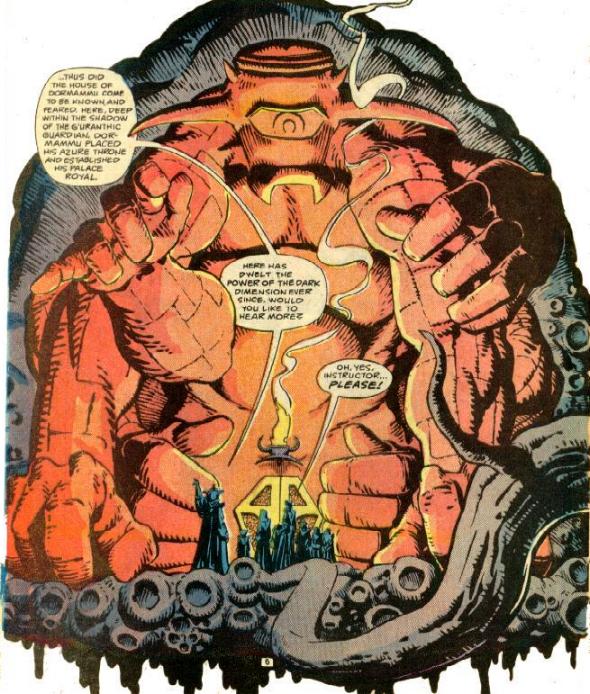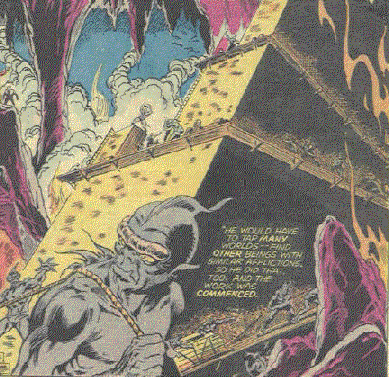- Spend less than 15 minutes in setting creation. Yes, setting creation is fun, if you are going to use it to it's fullest over multiple sessions. But in a convention game, no matter how cool you think your particular setting creation variation is for Fate, it is just getting in the way.
- Spend less than 15 minutes on character creation. This means a number of things. For example, have the players fill out just the first column of the pyramid, and let them do the rest in play. Or just come up with the High Concept and Trouble aspects, and fill out the rest in play.
- Stunts are for the most part too complicated to come up with in a convention game of Fate Core. They don't seem like it, I know, but they are. Especially for players who are inexperience with Fate. Fate Accelerated can get away with it, because the Approaches take less time than skills, and there is no "Use Skill A in place of Skill B" option.
- Extras are beyond the pale for creation in a convention game. If your Fate variation makes extensive use of Extras, then you really need to bring pre-gens to the table.
- Coming up with this stuff (Aspects, which skills to pick, etc.) is hard work for some players, especially people new to Fate. Some people just need to time to come up with character concepts, aspects, etc., that they are interested in and will enjoy, and making them do it quickly is a recipe for frustration and embarrassment. You think you are providing a fun experience for those players, but you really aren't.
- Pre-Gens are your friend. Really they are and you should be using them. Especially if your Fate version has some complicated extras, or a lot of setting specific stuff, pre-gens are actually much better at demonstrating how cool your setting is. It's easy as pie to come up with customizable pre-gens for Fate, just fill in the High Concept and Trouble, the first Skill column, and give them three stunts. People are playing much quicker, and can still make their characters their own.
- Do not spend more than 15 minutes going over rules.
- That being said, make sure you hit the following explicitly: Invoking Aspects for a +2 or a reroll (and don't forget the reroll!); Compelling Aspects to earn Fate Points (and don't forget to mention self-compels); How to roll the dice and add a skill value; the four action types, and the four outcomes, briefly, but then say that you will explain these in more detail as we play; mention Stress boxes and consequences in passing, but don't bother explaining in detail until someone has actually been attacked. That should not take more than 15 minutes is you are purposeful and business-like about it.
- Make sure you have a clear cheat sheet for rules handy, and constantly refer people to it during the game. If your variation has any particular extras that are important, make sure the cheat sheet describes them.
- If your setting is in any way not immediately obvious, have at least a one page handout that describes it's major selling points.
- Make sure you explain, explicitly, on the first few actions of players, what they are doing. Say the type of the action out loud ("sounds like you are trying to Create an Advantage, there, that means you are going to create an aspect, or discover one, here is how we do that..."), when the result is figured, say the outcome out loud ("ok, you have a tie on that Create Advantage, that means you don't get an aspect, but you do get a boost"). Use the actual words in the rulebook, and use them consistently.
- Demonstrate by example! Have your GM characters roll a Create Advantage as their first action. Compel a situation aspect on a player as early as possible. Invite a compel on a GM character aspect at the earliest opportunity. Examples in play, explicitly explained, are much better than any amount of rules explanation before play starts.
- If you are not actually role-playing within 40 minutes of the start of the convention game, you are pissing off players. Really and truly, regardless of how much fun you think they are having, they aren't. At least half of them are just angry that they are still talking about rules stuff and creating characters. 40 minutes is probably still too long.
- For crying out loud, make sure everybody gets the damn spotlight every once in a while! Jumpin' Jehoshaphat, it makes me so frikkin' angry when I see a player sitting across from me in a convention game and it has been at least 15 minutes since the GM has last asked them what they are doing, or given them a chance for some input. This is GM'ing 101, my friends, it's an entry-level skill. If you are worried that you can't keep track, literally play the whole game as one big conflict, going around and around and taking turns, because that is much better than leaving a player out in the cold.
EDIT: added from comments - here is a rule of thumb for how much time setting and character creation can and should take in any game: no more than 1/8th of the time that will be spent playing. 4 hour game? No more than 30 minutes. Four session game? No more than 1/2 session. 8 session game? Use a whole session. Obviously, one session is probably enough for any game, but I could see a long term game of something like Fantasy Hero/Champions needing even more time (although it probably isn't spent in the session).

.jpg)





.PNG)

_Mighty_Avengers_Vol_3_2.jpg)